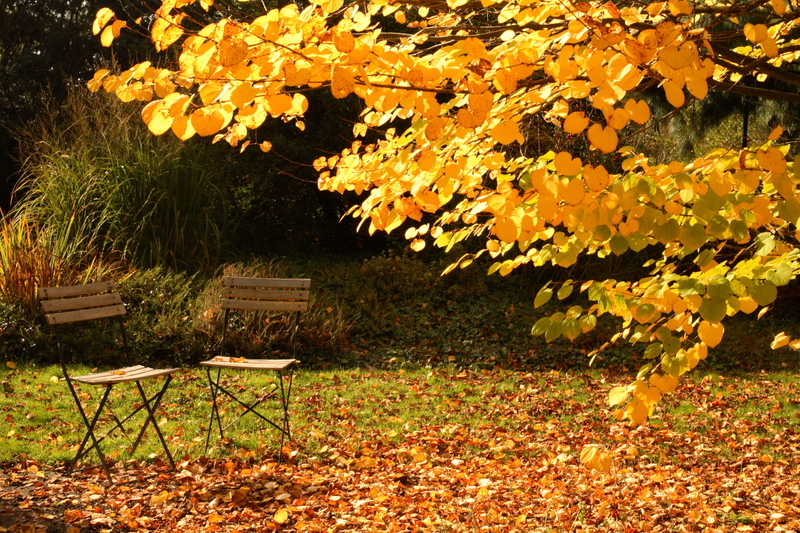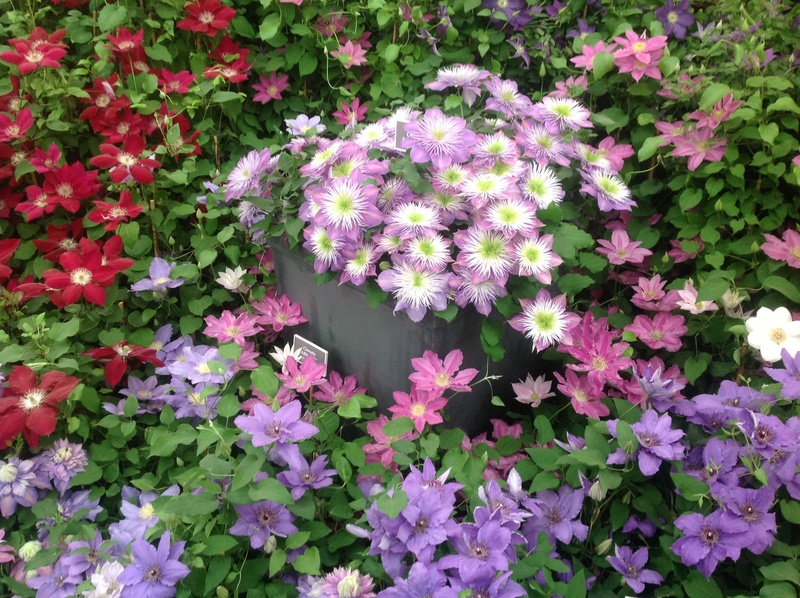Green Thumb Tips for a Blooming Herb Sanctuary
Posted on 21/09/2025
Green Thumb Tips for a Blooming Herb Sanctuary
Do you dream of a lush, fragrant retreat brimming with fresh herbs for your kitchen and home? Creating a thriving herb sanctuary isn't just a gardener's fantasy--it's a rewarding reality you can bring to life, whether you're working with a sprawling backyard or a cozy balcony. In this comprehensive guide, we will unveil essential green thumb tips to help you grow, nurture, and harvest a bountiful herb garden. Read on to discover expert advice for transforming any space into your own flourishing herb oasis.

1. Choosing the Right Herbs for Your Sanctuary
Assess Your Space and Climate
- Sunlight Requirements: Most culinary herbs, such as basil and rosemary, require a minimum of 6 hours of sunlight. Analyze your chosen spot's sun exposure before planting.
- Climate Considerations: While some herbs like sage and thyme prefer dry climates, others such as cilantro and parsley thrive in cooler, moist conditions. Choose varieties that naturally suit your local weather.
- Keep It Manageable: Start with a selection of 4 to 6 herbs that you use most often or are enthusiastic to learn about.
Popular Herbs to Kickstart Your Herb Sanctuary
- Basil: A kitchen staple for Italian dishes and perfect for pestos.
- Mint: Delightful in teas, salads, and even cocktails--just be aware it can spread quickly!
- Rosemary: Wonderful flavor enhancer for meats and breads.
- Parsley: Versatile garnish and flavor booster.
- Thyme: Aromatic herb used in soups, stews, and roasted vegetables.
- Lemon Balm: Adds a citrusy twist to teas and desserts--also known for its calming aroma.
2. Planning and Designing Your Herb Sanctuary
Layout and Design Principles
Careful planning is the foundation of a successful herb garden sanctuary. Consider both aesthetics and functionality by arranging herbs with similar needs together, allowing easy access for harvesting and maintenance.
- Use raised beds for better drainage and soil control.
- Plant herbs in containers if space is limited or mobility is important.
- Incorporate vertical gardening methods for compact areas--think wall planters or hanging baskets.
- Blend different colors, leaf textures, and heights for visual interest and vibrant energy.
Soil Preparation: The Foundation for Growth
- Well-Draining Soil: Most herbs dislike prolonged moisture. Amend heavy clay or dense soil with sand, compost, and organic matter.
- pH Matters: A slightly acidic to neutral pH (6.0 to 7.0) is ideal for most culinary herbs. Use a simple soil test kit to verify.
- Enrich with Compost: Regularly add compost to nourish your herbs naturally without resorting to harsh chemical fertilizers.
3. Essential Care: Watering, Feeding, and Lighting
Watering Guidelines for Thriving Herbs
Overwatering is the number one cause of failed herb gardens.
- Check Soil Moisture: Insert your finger an inch into the soil--if it feels dry, it's time to water.
- Water Early: Morning is best, as it allows foliage to dry out and discourages fungal growth.
- Container Herbs: Potted herbs dry out more quickly, so monitor them at least every other day in hot weather.
Feeding Your Herb Sanctuary
- Use Organic Fertilizers: Fish emulsion, seaweed extracts, or compost teas provide balanced nutrients without chemical runoff.
- Don't Overfeed: Too much fertilizer can result in lush leaves with diluted flavor.
Optimal Lighting Tips
- Grow Lights: If your home or apartment lacks direct sunlight, supplement with LED grow lights for strong, healthy herbs year-round.
- Rotate Pots: Turn your pots every week to promote even growth and prevent legginess.
4. Pruning, Harvesting, and Preserving Your Herbs
Pruning Techniques for Bushier Growth
- Pinch Back Often: Regularly snipping the tops encourages fuller, bushier plants instead of tall, spindly growth.
- Remove Flowers: Unless you're after seeds, pinch off flower buds as they appear to keep flavors intense and leaves prolific.
Harvesting for Best Flavor and Health
- Morning Harvest: Pick leaves in the morning when oils and flavors peak.
- Never Cut More Than One-Third: Taking too much at once can shock plants and reduce regrowth.
Preserving Your Bounty
- Dry Herbs: Hang small bunches upside down in a dark, airy space for a few weeks.
- Freeze Herbs: Chop and freeze in ice cube trays with a bit of water or oil for instant flavor boosts all winter.
- Infusions and Syrups: Craft herbal oils, vinegars, or homemade syrups for unique culinary creations.
5. Eco-Friendly Pest and Disease Management
Preventative Practices
- Companion Planting: Intercrop with pest-repellent varieties like chives, garlic, and marigold.
- Healthy Soil: Robust soil biology can naturally suppress many pests and diseases.
Natural Solutions for Common Issues
- Aphids: A strong spray of water or a diluted soap solution can dislodge these soft-bodied pests.
- Fungal Problems: Improve air circulation and water at the base of the plant. Sprinkle cinnamon powder as a natural fungicide.
- Snails & Slugs: Crush eggshells around the base or use copper tape to deter these unwelcome visitors.
6. Advanced Green Thumb Tips for a Flourishing Herb Sanctuary
Succession Sowing
To achieve a continuous supply, practice succession sowing. Stagger your seedings every 2-3 weeks for herbs like dill, cilantro, and basil, ensuring a fresh harvest throughout the season.
Indoor and Outdoor Integration
- Moveable Containers: Pots and mobile tubs let you chase the sun or shelter delicate herbs during inclement weather.
- Window Sills: Window boxes provide a near-instant indoor sanctuary for herbs--perfect for year-round cultivation and quick snipping as you cook.
Attract Pollinators and Beneficial Insects
- Florals for Bees: Nectar-rich herbs such as lavender, oregano, and borage invite bees and butterflies to enhance pollination and ecosystem health.
- Reduce Pesticides: Healthy populations of predatory insects like ladybugs provide natural pest control, reducing the need for sprays.
7. Creative and Relaxing Uses for Your Herb Sanctuary
Culinary Adventures
- Fresh Flavor at Your Fingertips: Elevate every meal by adding freshly snipped herbs directly to dishes and beverages.
- Herb Blends: Dry and blend your own Italian seasoning, bouquet garni, or herbal teas for unique flavors tailored to your taste.
Holistic Well-Being and Aromatherapy
- Homemade Teas: Try mint for digestion or lemon balm for calming anxiety.
- Natural Home Scents: Simmer rosemary and sage on the stove for an all-natural air freshener.
- DIY Salves and Balms: Calendula and lavender infusions can be used in moisturizers and skin soothing balms.
Herbs as Decorative Accents
- Living Centerpieces: Small potted herbs double as dining table decor and handy garnishes.
- Herbal Wreaths or Bouquets: Air-dried bunches make stunning, fragrant additions to any room.
8. Troubleshooting and Common Herb Garden Problems
Wilting or Yellowing Leaves
- Too Much/Too Little Water: Check drainage and avoid waterlogged soil--herbs prefer to dry out slightly between waterings.
- Nutrient Deficiency: Feed with liquid seaweed or compost tea if leaves become pale and lose their lush color.
Poor Germination or Growth
- Old Seeds: Always use fresh seeds or store properly for high viability.
- Insufficient Light: Relocate to a sunnier spot or use grow lights for supplemental energy.
Pest Infestations
- Manual Removal: Inspect frequently and remove pests by hand whenever possible.
- Encourage Birds: Birds enjoy feasting on many common pests--install a bird bath or feeder nearby.

9. The Long-Term Benefits of a Home Herb Sanctuary
- Fresh, Organic Herbs: Enjoy pesticide-free, nutritionally potent leaves at your convenience.
- Reduced Grocery Bills: Skip the store-bought bunches and harvest exactly what you need, when you need it.
- Sustainable Living: Growing at home means less packaging waste and a lighter environmental footprint.
- Therapeutic Hobby: Gardening soothes stress, fosters mindfulness, and connects you with nature.
Conclusion: Cultivate Your Blooming Herb Sanctuary Today
With these green thumb tips and a commitment to organic, eco-friendly practices, you're well on your way to reaping the lush rewards of a blooming herb sanctuary. Whether you're a new gardener or an experienced grower, the simple pleasures of growing fresh herbs--from the aroma of basil leaves to the beauty of flowering chives--are always within reach. So, roll up your sleeves, dig in the dirt, and create the herbal haven you've always imagined. Your senses, your kitchen, and the local environment will thank you!
Happy gardening, and may your herb sanctuary bloom year after year!

